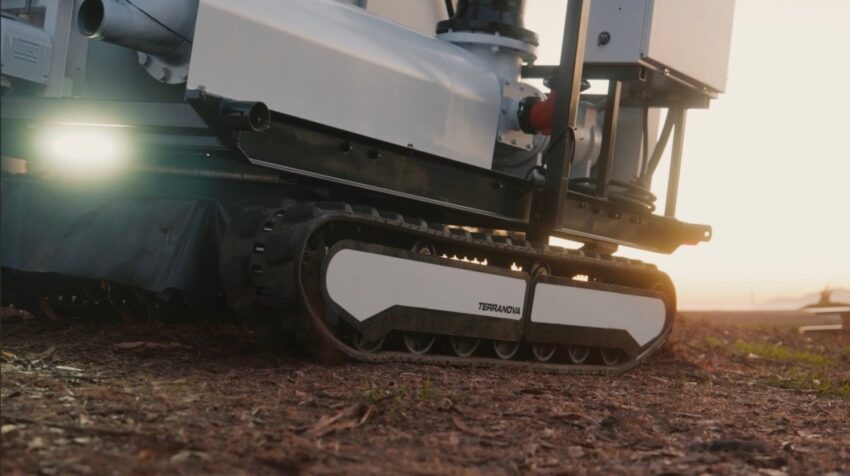
how one founder plans to save cities A new approach to combatting sea-level rise involves innovative terraforming robots designed to elevate cities rather than relying on traditional seawalls or dikes.
how one founder plans to save cities
Introduction to Terranova’s Vision
As climate change accelerates, cities around the world face an existential threat from rising sea levels. Traditional methods of flood protection, such as seawalls and dikes, have proven insufficient in the long term. In response, a startup named Terranova has emerged with a groundbreaking solution: terraforming robots that can physically raise urban areas to mitigate flooding risks. This innovative approach not only addresses immediate concerns but also reimagines how cities can adapt to changing environmental conditions.
The Concept of Terraforming Robots
Terraforming robots are designed to work collaboratively to elevate city infrastructure. Unlike conventional flood defenses that merely attempt to keep water out, these robots aim to raise the ground level of urban areas, effectively creating a buffer against rising tides. The technology behind these robots is rooted in advanced engineering and robotics, allowing for precision in construction and adaptability to various terrains.
How the Robots Work
The operational mechanism of the terraforming robots involves several key processes:
- Soil Analysis: The robots begin by conducting a thorough analysis of the existing soil and terrain. This step is crucial to determine the best approach for elevation.
- Material Sourcing: Once the analysis is complete, the robots identify and source materials needed for the elevation process. This may include local soil, sand, or other aggregates.
- Elevation Process: The robots then begin the elevation process by systematically adding layers of material to raise the ground level. This process can be tailored to the specific needs of different areas within a city.
- Monitoring and Adjustment: Throughout the operation, the robots continuously monitor the structural integrity and make adjustments as necessary to ensure stability and effectiveness.
Advantages Over Traditional Methods
Terranova’s approach offers several advantages compared to traditional flood defense systems:
- Long-term Sustainability: By raising the ground level, cities can adapt to rising sea levels over time, providing a more sustainable solution than temporary barriers.
- Reduced Environmental Impact: The use of local materials minimizes the environmental footprint associated with transporting heavy construction materials.
- Flexibility: The robots can be deployed in various urban settings, making them adaptable to different geographical and environmental conditions.
- Cost-Effectiveness: While initial investments may be significant, the long-term savings from reduced flood damage and maintenance can outweigh the costs of traditional flood defenses.
Case Study: San Rafael
Terranova’s pilot project is set in San Rafael, California, a city that has been grappling with the threat of flooding due to its proximity to the San Francisco Bay. The local government has expressed interest in innovative solutions to address these challenges, making it an ideal testing ground for the terraforming robots.
Community Engagement and Support
Before launching the project, Terranova engaged with local stakeholders, including residents, city officials, and environmental groups. This engagement was crucial for several reasons:
- Building Trust: By involving the community in the planning process, Terranova aimed to build trust and transparency around the project.
- Gathering Feedback: Community input helped refine the project’s design and implementation, ensuring it met the needs and concerns of local residents.
- Fostering Collaboration: The project encouraged collaboration between various stakeholders, including government agencies, environmental organizations, and local businesses.
Implementation Timeline
The implementation of the terraforming robots in San Rafael is expected to follow a structured timeline:
- Phase 1 – Planning and Design: This phase involves detailed planning, community engagement, and finalizing the design of the robots and the elevation process.
- Phase 2 – Pilot Testing: A small-scale pilot test will be conducted to assess the effectiveness of the robots and make necessary adjustments.
- Phase 3 – Full Deployment: Following successful pilot testing, the robots will be deployed across designated areas of San Rafael.
- Phase 4 – Monitoring and Maintenance: Continuous monitoring will ensure the stability and effectiveness of the elevated areas, with maintenance performed as needed.
Broader Implications of Terraforming Technology
The implications of Terranova’s terraforming robots extend beyond San Rafael. If successful, this technology could revolutionize urban planning and flood management in coastal cities worldwide. The potential applications are vast:
- Global Reach: Cities in vulnerable regions, such as Miami, New Orleans, and Jakarta, could benefit from similar terraforming initiatives.
- Integration with Smart City Technologies: The robots could be integrated with smart city technologies, allowing for real-time data collection and analysis to optimize urban resilience.
- Inspiration for Future Innovations: Terranova’s approach may inspire other innovative solutions to address climate change challenges, encouraging further research and development in the field.
Potential Challenges and Criticisms
Despite the promising nature of the technology, several challenges and criticisms have emerged:
- Technical Limitations: The effectiveness of the robots in diverse urban environments remains to be fully tested, raising questions about their adaptability.
- Cost Concerns: The initial investment required for research, development, and deployment may deter some municipalities, particularly those with limited budgets.
- Environmental Impact: While the use of local materials is a benefit, the long-term environmental impact of raising ground levels, including potential disruption to local ecosystems, needs thorough examination.
Conclusion: A New Era of Urban Resilience
Terranova’s innovative approach to combating flooding through terraforming robots represents a significant shift in how cities can adapt to the challenges posed by climate change. By focusing on elevating urban areas rather than merely defending against water, this technology offers a sustainable and flexible solution to one of the most pressing issues of our time.
As the pilot project in San Rafael unfolds, the eyes of urban planners, environmentalists, and policymakers will be watching closely. The success or failure of this initiative could set a precedent for future urban resilience strategies, potentially reshaping the landscape of cities around the globe.
Source: Original report
Was this helpful?
Last Modified: November 8, 2025 at 6:38 am
2 views















